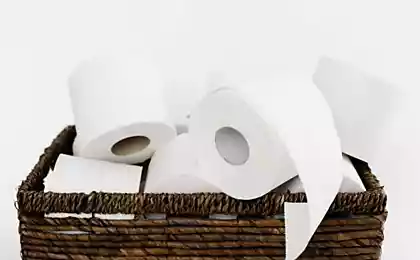444
American scientist have created a battery made of paper
Folding, cheap paper battery that can generate a small amount of energy brings something new to the art of origami, the Japanese technique of folding figures out of paper. An engineer from Binghamton University in new York have developed a paper battery that generates electricity with the help of microorganisms in a drop of dirty water on the paper.
As explained in the July issue of the journal Nano Energy, the fluid contains bacteria that can produce energy for paper-based biosensors. This will be particularly useful in cases and places where access to electricity is limited.

"Any organic material can be a source of nutrition for bacteria and a source of bacteria it can be," says Ciocan "Sean" Choi (Seokheun Sean Choi), engineer who developed the battery. "And we don't need to think about how to put water with bacteria inside of the battery, because the paper itself can absorb it, due to the capillary effect.
The battery can be folded to the size of a matchbox and uses cheap air permeable cathode is made of liquid Nickel, sprayed on one side of the paper. As mentioned origami technique was used to create a three-dimensional stackable batteries structure from the original flat.
It is also worth noting that this development does not require the use of special nano-materials, as it was in past development of battery-based paper.
One such battery is capable enough microwatt energy for the operation of biosensors in the fields costs about 5 cents. At the moment, the paper sensors need to be manually collecting data for analysis, they collect. More precisely with the help of special devices. But Choi received a three-year grant of $300,000 from the National science Foundation to make an Autonomous system that will make the paper sensors are independent from other devices. published
P. S. And remember, only by changing their consumption — together we change the world! ©
Source: tehplaneta.ru/raznie-interesnosti/amerikanskijj-uchenyjj-sozdal-batareyu-iz-bumagi
As explained in the July issue of the journal Nano Energy, the fluid contains bacteria that can produce energy for paper-based biosensors. This will be particularly useful in cases and places where access to electricity is limited.

"Any organic material can be a source of nutrition for bacteria and a source of bacteria it can be," says Ciocan "Sean" Choi (Seokheun Sean Choi), engineer who developed the battery. "And we don't need to think about how to put water with bacteria inside of the battery, because the paper itself can absorb it, due to the capillary effect.
The battery can be folded to the size of a matchbox and uses cheap air permeable cathode is made of liquid Nickel, sprayed on one side of the paper. As mentioned origami technique was used to create a three-dimensional stackable batteries structure from the original flat.
It is also worth noting that this development does not require the use of special nano-materials, as it was in past development of battery-based paper.
One such battery is capable enough microwatt energy for the operation of biosensors in the fields costs about 5 cents. At the moment, the paper sensors need to be manually collecting data for analysis, they collect. More precisely with the help of special devices. But Choi received a three-year grant of $300,000 from the National science Foundation to make an Autonomous system that will make the paper sensors are independent from other devices. published
P. S. And remember, only by changing their consumption — together we change the world! ©
Source: tehplaneta.ru/raznie-interesnosti/amerikanskijj-uchenyjj-sozdal-batareyu-iz-bumagi
Overview the world's first zero waste research station in Antarctica.
Technical innovations that changed the sport























